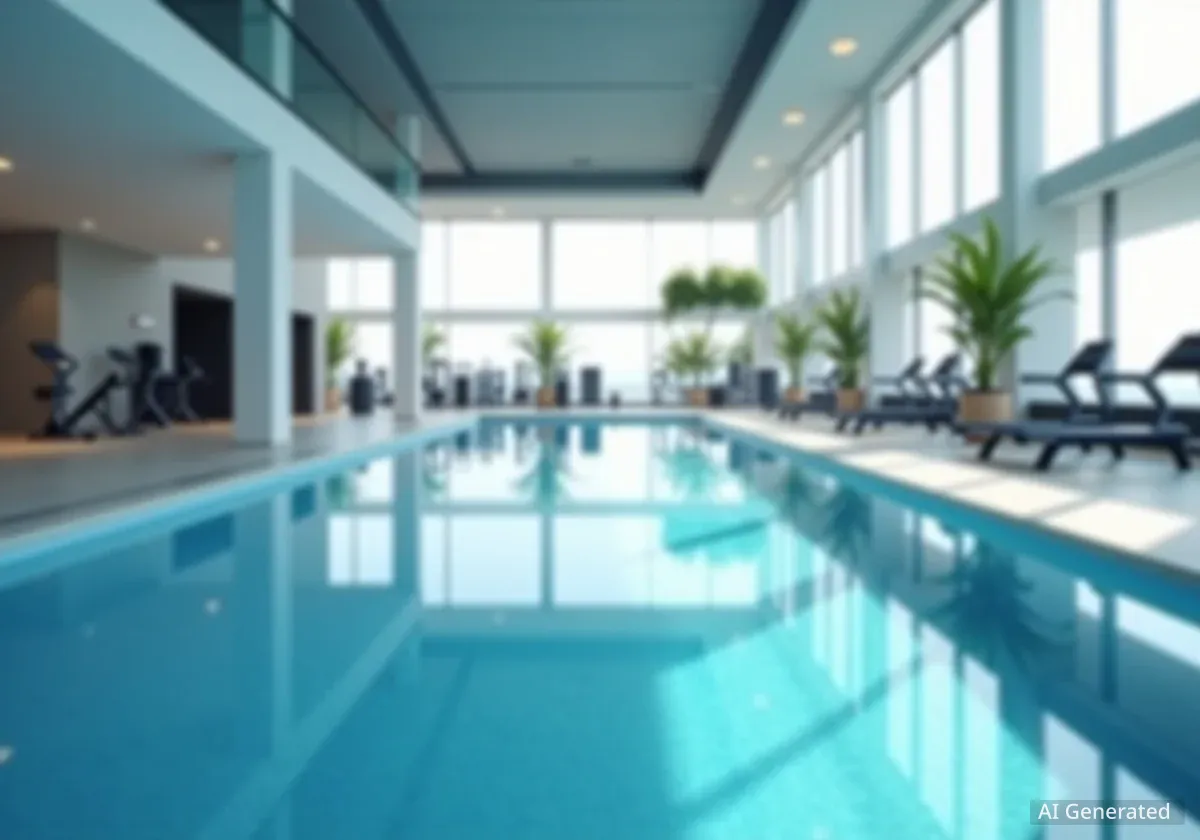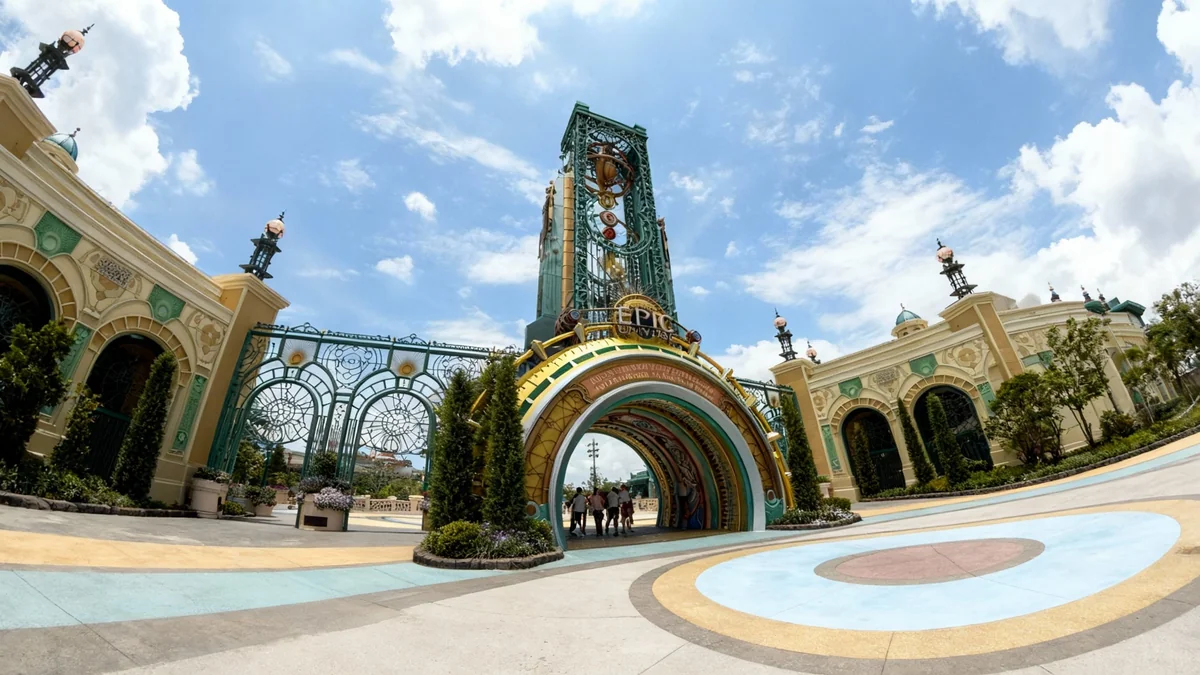David Lloyd Leisure is seeking approval to develop a new health and fitness club in Rugby. The proposed facility would be located near Junction 1 of the M6 motorway, specifically within the Rugby Gateway development zone. This project aims to bring significant health and wellness amenities, including indoor and outdoor swimming pools, to the area. The application has been submitted to Rugby Borough Council, marking a key step in the development process.
Key Takeaways
- David Lloyd Leisure plans a new club at Rugby Gateway.
- The facility would include indoor and outdoor swimming pools.
- A planning application has been submitted to Rugby Borough Council.
- The development is expected to create 80 new jobs.
- It represents a significant investment in local leisure and wellness.
Proposed Location and Facilities
The new David Lloyd Club is planned for a site south of the A426 Leicester Road. This location is part of the broader Rugby Gateway development. The area is already designated for various commercial and industrial uses, making it suitable for a large-scale leisure facility. The club would offer a wide range of amenities for members.
Key features of the proposed club include multiple swimming pools. There would be an indoor pool for year-round use and an outdoor pool for warmer months. This dual offering aims to cater to diverse preferences and weather conditions. Additionally, the plans detail a large gymnasium, exercise studios, and tennis courts, providing comprehensive fitness options.
Fact File: David Lloyd Leisure
- Founded: 1982 by former tennis player David Lloyd.
- Number of Clubs: Over 130 clubs across the UK and Europe.
- Members: Approximately 730,000 members.
- Services: Offers health, fitness, tennis, and spa facilities.
Economic Impact and Job Creation
The development is projected to create a notable number of new jobs. According to the planning documents, the new club would support around 80 full-time and part-time employment opportunities. These roles would span various areas, including fitness instructors, administrative staff, maintenance personnel, and hospitality workers. This influx of jobs is a positive development for the local economy.
The construction phase itself would also generate temporary employment. Local contractors and suppliers would likely benefit from the project. Once operational, the club is expected to draw members from Rugby and surrounding areas, further boosting local businesses through increased foot traffic and spending. This represents a substantial investment in the region's leisure infrastructure.
"This new club would provide state-of-the-art facilities for health and wellness, creating significant employment opportunities for the community of Rugby," a representative stated in the planning application documents.
Community Benefits and Wellness Focus
David Lloyd Clubs are known for their focus on family-friendly facilities and comprehensive wellness programs. The proposed Rugby club is expected to follow this model. It would offer a safe and engaging environment for individuals and families to pursue their fitness goals. The inclusion of crèche facilities and children's activity programs is common in David Lloyd clubs, making them accessible to parents.
The new facility would also contribute to public health initiatives by providing accessible sports and exercise options. Regular physical activity is crucial for well-being, and a modern leisure center can play a significant role in promoting healthier lifestyles. This aligns with broader public health objectives to increase community participation in sports and fitness.
Understanding Rugby Gateway
Rugby Gateway is a major development site located strategically near Junction 1 of the M6 motorway. It is designed to attract commercial, industrial, and leisure businesses. Its proximity to major transport links makes it an appealing location for large-scale developments. The area is part of Rugby's economic growth strategy.
Planning Application Details
The planning application was formally submitted to Rugby Borough Council. This submission includes detailed architectural plans, environmental impact assessments, and reports on traffic management. The council will now review these documents thoroughly. Public consultation periods are typically part of this process, allowing local residents and interested parties to submit their feedback.
The approval process can take several months. Factors such as traffic impact, environmental considerations, and local demand for such facilities will be evaluated. David Lloyd Leisure has a track record of developing similar clubs across the UK, suggesting their application will be comprehensive and well-prepared. The outcome of the application will determine the timeline for construction.
Impact on Local Infrastructure
A development of this size requires careful consideration of local infrastructure. The planning application would address potential impacts on road networks and utilities. Access points, parking provisions, and potential traffic flow changes around the Rugby Gateway site are key elements. The developer is expected to propose solutions to manage any increased demand on local services.
The site's location near a major motorway junction helps to mitigate some traffic concerns, as many members may arrive via the M6. However, local road usage will still be a focus of the council's review. The aim is to ensure that the new club integrates smoothly with existing infrastructure without causing undue disruption to residents.
Future Outlook for Rugby's Leisure Scene
If approved, the David Lloyd Club would significantly enhance Rugby's leisure offerings. It would provide a premium option for fitness and recreation, complementing existing local facilities. This type of investment often signals confidence in the area's growth potential. For residents, it means more choices for exercise, relaxation, and social activities.
The presence of a major national leisure brand like David Lloyd can also attract further investment to the region. It reinforces Rugby's position as a desirable place to live and work. The long-term benefits could extend beyond direct club membership, supporting a more active and engaged community overall. This project marks an important step in the evolution of leisure services in Rugby.





